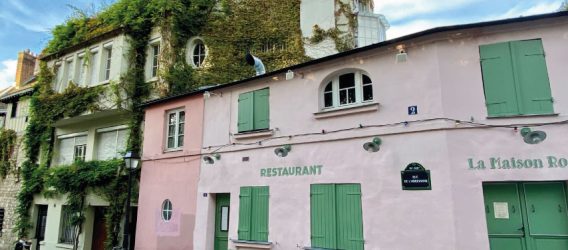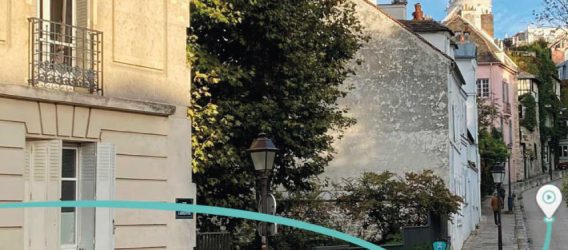
How to visit the Arc de Triomphe in Paris ?
You are a Parisian or a visitor to the French capital and you would like to visit the Arc de Triomphe? Whether you are alone, with your partner, family or friends, a visit to this historic monument is undoubtedly a classic to do in Paris. We detail all the information you need to know about this Parisian building in order to best prepare your visit.
The Arc de Triomphe de l’Étoile: a historical symbol
Commissioned by Napoleon Bonaparte in 1806 following the Battle of Austerlitz, the Arc de Triomphe de l’Étoile – commonly known as the Arc de Triomphe – is a Parisian monument honouring the soldiers who fell for France during the French Revolution and the Napoleonic period. Located at the top of the Avenue des Champs-Élysées and the Avenue de la Grande Armée, it was inaugurated in 1836, three decades after the Emperor’s request for its erection, by the French king, Louis-Philippe. The names of the soldiers who defended the nation are inscribed on the monument, those underlined indicate that they died in battle.
A national monument with a strong historical connotation, the Arc de Triomphe welcomed in November 1920 the remains of the Unknown Soldier, killed during the First World War, who was buried on 28 January 1921. André Maginot, Minister of War at the time, lit the flame of remembrance on 11 November 1923 to commemorate the memory of the fallen. With the wish to never be extinguished, the flame is rekindled every evening at 6.30 p.m. during a ceremony held by veterans’ or war victims’ associations.
A must-see cultural visit in Paris
In addition to contemplating the Eiffel Tower, Montmartre or Notre-Dame de Paris during your guided tour of Paris, you will have the opportunity to discover the Arc de Triomphe, one of the strong symbols of France, classified as a historical monument since 1896. Its visit is an opportunity to admire a unique view from the top of the panoramic terrace which embraces the whole of Paris.
You will have the chance to admire the exceptional size of this building (about 50 metres high, 45 metres long and 22 metres wide) as well as the iconographic details that make it up. The architect Jean-François Chalgrin, who was selected to build the Arc de Triomphe, was inspired by the single-arched Roman Arch of Titus to build the Parisian version without columns and with particularly grandiose dimensions.
Throughout your visit, you will discover the permanent scenography set up in February 2008 by the artist Maurice Benayoun and the architect Christophe Girault. This museography, entitled Between Wars and Peace, gives an essential place to multimedia in order to learn about the history of the monument in a playful, interactive and modern way, while taking into account its evolution up to the present day. The visit provides a better understanding of the national and international symbolic importance of the Arc de Triomphe.
Highlights of the Arc de Triomphe
The Arc de Triomphe de l’Étoile has been the site of many events that have taken place at its feet.
In 1810, while still unfinished, the monument was invested for the marriage of Emperor Napoleon I to Archduchess Marie-Louise. For the occasion, the Emperor had a life-size model built of framework, stucco and trompe-l’oeil paintings to give the impression of a completed monument under which the future empress would solemnly walk. When Napoleon died, the procession carrying his ashes passed under the Arc de Triomphe on 15 December 1840.
On the night of 22 May 1885, Victor Hugo’s body was laid to rest under the historic monument before being buried in the Pantheon. At the time of the French poet’s funeral, the Arc de Triomphe was partially veiled with black crepe as a sign of homage and mourning.
In the midst of World War II, a demonstration of high school and university students took place on the Champs-Élysées and in front of the Arc de Triomphe on 11 November 1940. This was one of the very first public acts of resistance to the occupying forces in France. The Nazis firmly repressed this protest.
In 2018, the Gilets jaunes movement raged and led to the looting of the Arc de Triomphe. Some demonstrators drew graffiti on the walls of the building while others forced their way into the monument in which they looted the souvenir shop, damaged a model of the Arc and extensively damaged the various exhibition rooms of the museum.
From 18 September to 3 October 2021, the Arc de Triomphe is packed. In other words, it is covered with 25,000 m2 of bluish-silver canvas and 3 kilometres of red rope. This is a temporary work of art conceived by Christo and Jeanne-Claude and created posthumously as a tribute to this artist couple.
Prepare your visit
Before venturing into the Arc de Triomphe de l’Étoile, we suggest that you prepare your visit in advance in order to anticipate a possible queue and optimise your stay in Paris. Below, we provide you with all the practical information you need to know to discover this symbolic monument, located between the 8th, 16th and 17th arrondissements.
Price :
- The price of an individual ticket is €13 per person for a free visit of the monument.
- Certain categories of people can benefit from free admission on presentation of proof of age (under 18s, young people aged 18-25, disabled people and their carers, jobseekers, war invalids, etc.).
Opening hours :
- The Arc de Triomphe is open every day from 10a.m. to 11p.m. (with a last access possible at 10:15p.m.).
- Days of closure: 1st January, 1st May, 8th May (morning), 14th July (morning), 18th July, 11th November (morning) and 25th December.
- Due to bad weather conditions or official events, access to the monument may be partially or totally closed on an exceptional basis.
Access :
- The Arc de Triomphe is located at 27, rue Vernet – 75008 Paris.
- You can get there by public transport (lines 1, 2, 6 and RER A to Charles-de-Gaulle-Étoile station / lines 22, 30, 31, 52, 73, 92 and Balabus then take the underground next to the Champs Élysées or Grande Armée exit) or by car (exit Porte-Maillot and avenue de la Grande Armée or exit Porte Dauphine and avenue Foch).
- During your visit, you will have to climb 284 steps. The lifts are only available to people who have made a request in advance.
Because of its richness and symbolism, the Arc de Triomphe attracts a growing number of tourists every year. We therefore recommend that you book your tickets online at the monument’s official ticket office to avoid long queues to buy your entrance ticket. If you have a Paris Museum Pass, you can also avoid the queue by going directly to the security control to visit the Arc de Triomphe. The average visit is estimated to take 40 minutes.

Our latest articles
Subscribe to our newsletter





Finalize my Facebook registration